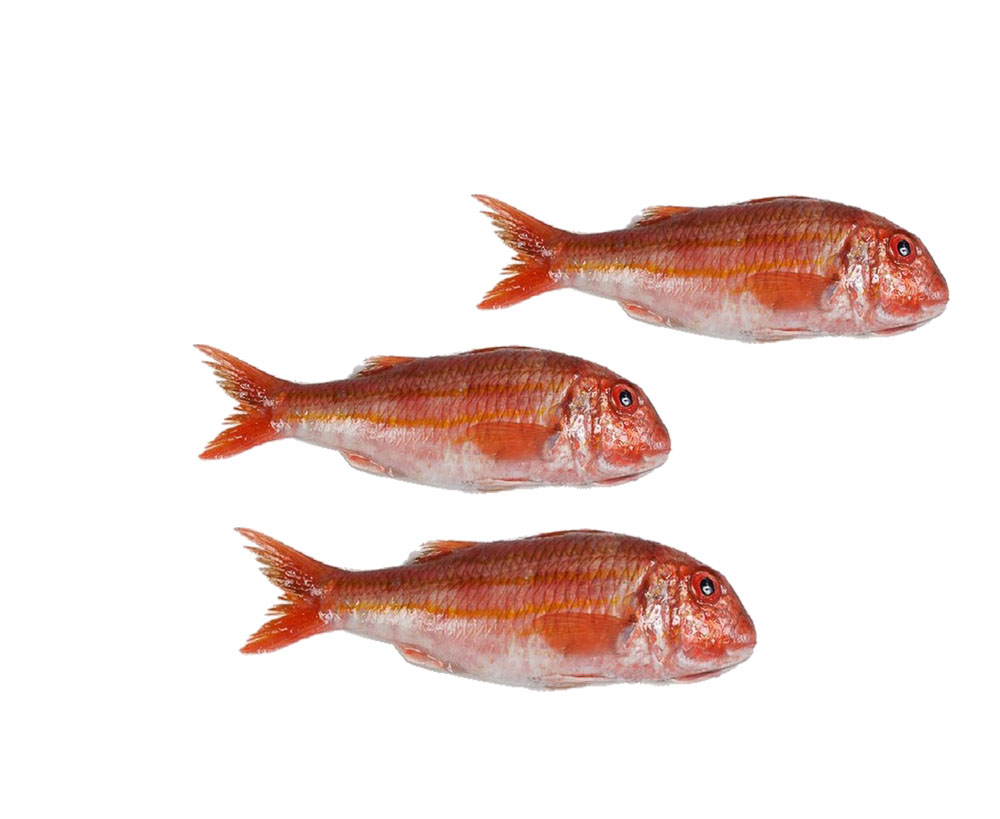
Two species of the mulidae family, very close to each other both in terms of commercial and gastronomic similarity.
The mud mullet (Mullus barbatus) and the red mullet (Mullus surmuletus) have in common the bright colour of their scales: red, pink and orange, which gradually fades when they lose their freshness.
Both species are caught mainly along the coasts of the Mediterranean Sea. And, the mud mullet can be found closer to the coasts, at depths between 2 and 30 m; or in the case of the red mullet at a depth of up to 100 m.
They have an elongated body of 10 to 20 centimetres and their diet is based on worms, small molluscs and crustaceans. They usually move in small schools. The mud mullet is caught with trawls, and the rock mullet with trammel nets. Autumn is a good time to eat them as there are larger catches.
The mud mullet is the most characteristic in Mediterranean markets.

Two species of the mulidae family, very close to each other both in terms of commercial and gastronomic similarity.
The mud mullet (Mullus barbatus) and the red mullet (Mullus surmuletus) have in common the bright colour of their scales: red, pink and orange, which gradually fades when they lose their freshness.
Both species are caught mainly along the coasts of the Mediterranean Sea. And, the mud mullet can be found closer to the coasts, at depths between 2 and 30 m; or in the case of the red mullet at a depth of up to 100 m.
They have an elongated body of 10 to 20 centimetres and their diet is based on worms, small molluscs and crustaceans. They usually move in small schools. The mud mullet is caught with trawls, and the rock mullet with trammel nets. Autumn is a good time to eat them as there are larger catches.
The mud mullet is the most characteristic in Mediterranean markets.
